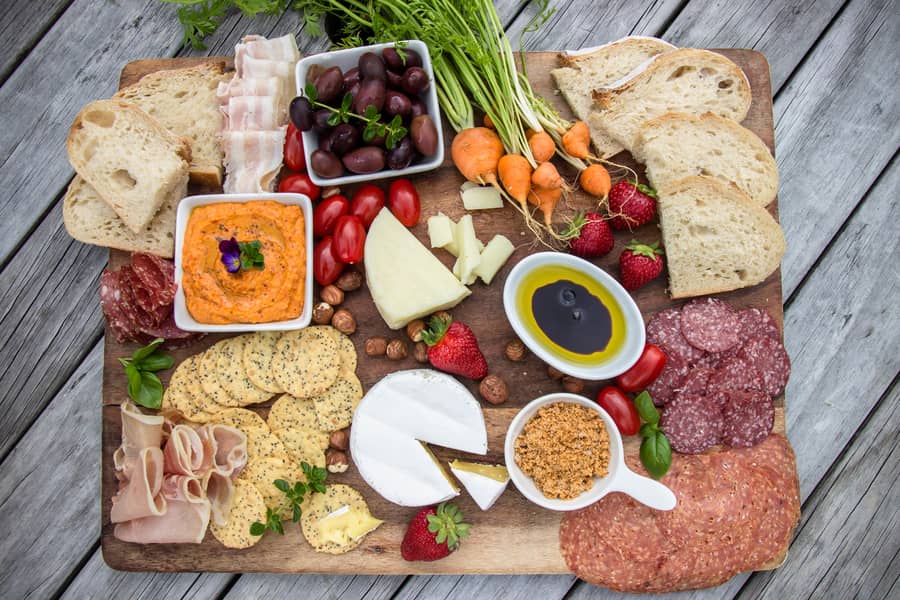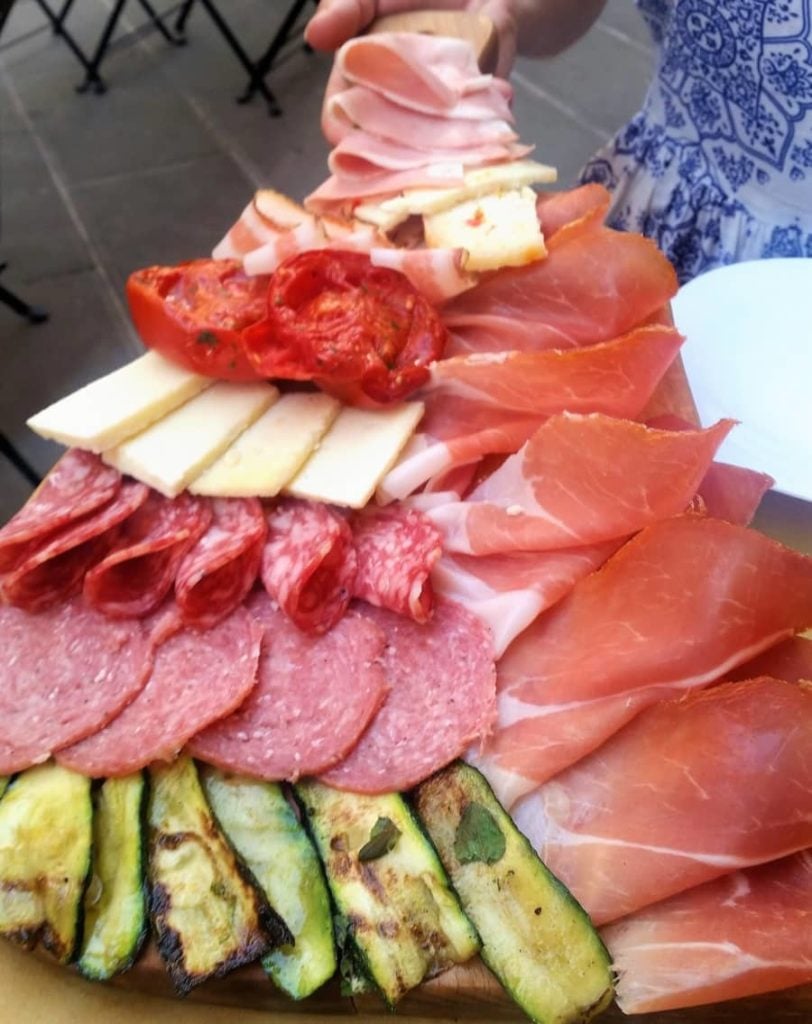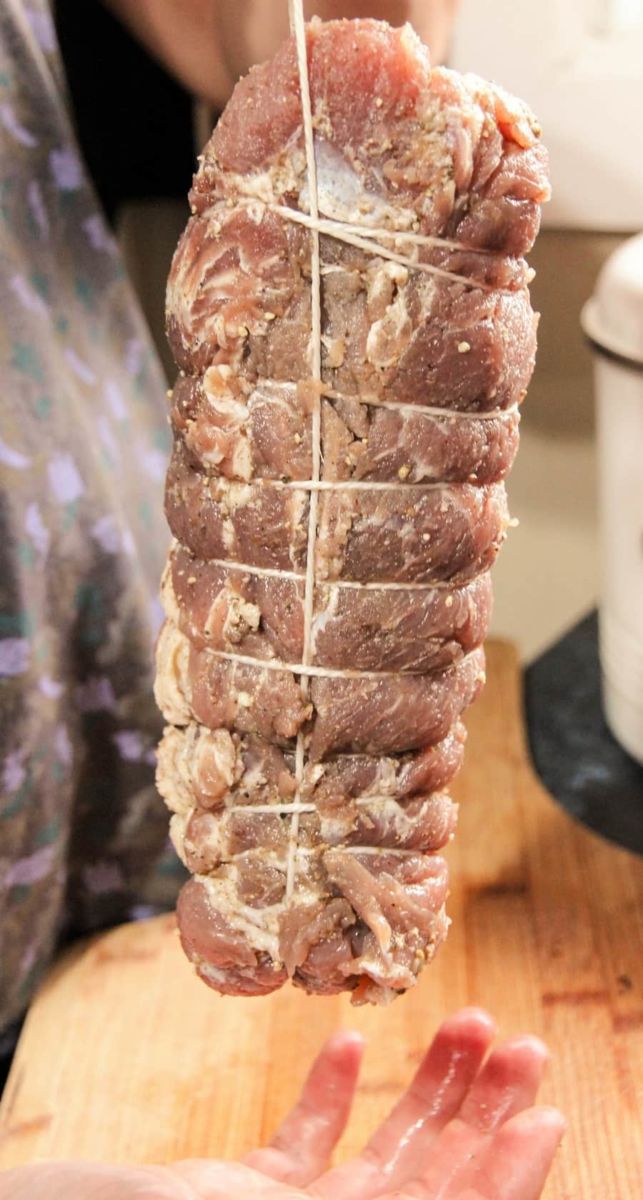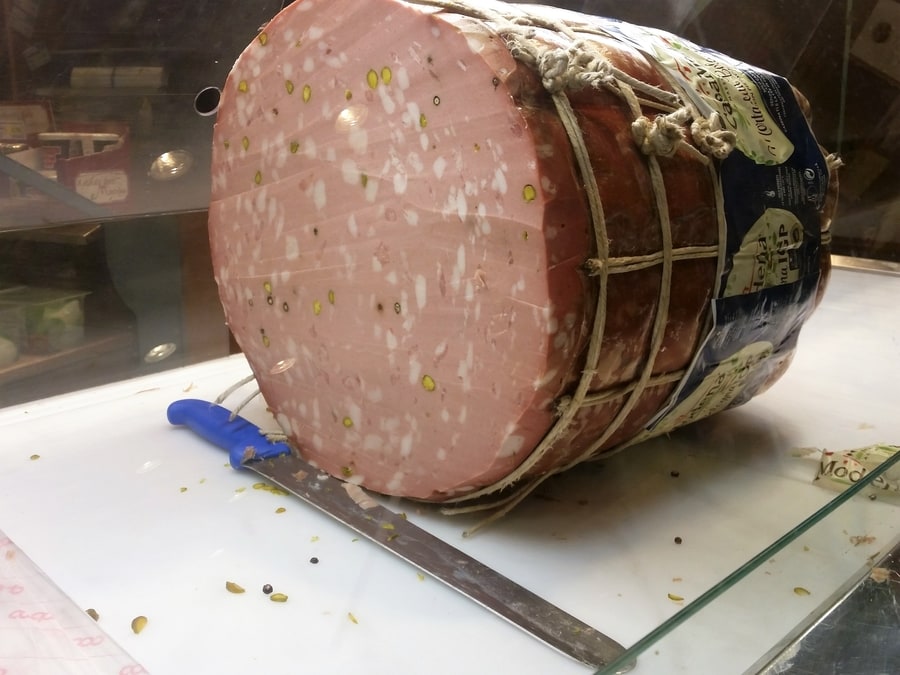KEY SUMMARY
Salumi is the craft of preserving and salt-curing meat. The major muscles of the pig represent most of the traditional salumi. The muscles are cured to create specialty products such as pancetta. Salami is fermented salt-cured or cooked sausage. Salami is part of the traditional salumi category.
Salumi Types and Muscle Group
| Salumi | Muscle Group |
|---|---|
| Prosciutto | Ham (hind leg) |
| Pancetta (Tesa, Arotala) | Pork Belly |
| Coppa (Coppacolla) | Neck, Collar |
| Guanciale | Pork Jowl (cheek) |
| Spalla | Shoulder |
| Lardo | Back Fat |
| Lonza (Lomo, Lonzino) | Loin |
Salumi was a specialist of the Norcini, the traveling butchers of Italy, many hundreds of years ago. They could divide the half pig into the above muscle and meat sections. It was used to preserve the meat with salt since no refrigeration had been invented.
Classic Italian Salami
- Genoa Salami
- Milano Salami
- Felino Salami
- Napoli Salami
- Soppressata
- Finocchiona
- Calabrese Salami

There are hundreds of salami types across Italy, but here are some typical classics.
I will now go through classic salumi and salami in detail.
Classic types of Salumi
- Prosciutto
- Pancetta (Tesa, Arotala)
- Coppa (Coppacolla)
- Guanciale
- Spalla
- Lardo
- Lonza (Lomo, Lonzino)

Opposed to the modern butchery approach used by many Western countries for the pig, the traditional Italian salumi style was based on minimizing the waste and dry curing whole muscles to last longer during the leaner months of the year.
Prosciutto (leg)
The quality of the pork will define how good traditional prosciutto is. It was made during the Roman era and represents pure simplicity and pleasure.
Crafted over time to preserve and intensify quality pork meat.
Some are aged up to 48 months before being sold and consumed.
Prosciutto is seen as a very special Artisan product in Italy (although it has also been rather commercialized). These long-term legs are normally reserved for people all over Europe and the world, so I’m told.
Prosciutto de Parma – Special Salumi
At the top end of the Italian scale, the Parma Ham pig gets a grain diet, but a key difference is the leftover cheese whey from the Parmigiano-Reggiano cheese region nearby (Hence the name Parm-a Ham!).
A Protected Designation of Origin (PDO) is given—a European Community Certification that protects traditional methods and a geographical area of production.
Lastly, because of the PDO and incredible scrutiny – no nitrates are used in Parma Ham Parma Ham. It can only come from Parma.
Pancetta (Pork Belly)
Unlike bacon, pork belly is either flat (tesa) or rolled (arrotolata). When finished, the pancetta has lost enough weight from dry curing to be eaten without cooking.
This is a useful cured product in the infamous classic – carbonara pasta!
Lonzo (loin)
This cut is made from the middle area of the ‘back steak’ from a well-looked-after pig. It is the loin/fillet, a beautiful boneless piece of meat.
This is a great cut to use for wild game animals, though many muscles are good for this type of salt curing, from my experience.
The classic lonzo has a thin layer of fat around the edge.
Coppa (Neck & Loin)

From the back of the
There are many spice variations for traditional coppa, especially across Italy.
A US-style butchering of a pig would cut this muscle in half instead of keeping it as one whole muscle. If you wanted this whole cut from a butcher, you may have to make a specific request.
Guanciale (Jowl/Jaw)
Super Pancetta! It’s a part of the pig with more texture and decent fat.
Sliced thinly or used to enhance the flavors of other dishes, it is versatile, just like pancetta. In Italy, it is used widely in pasta, like carbonara.
Depending on how it’s butchered, it sometimes has the cheek, and sometimes not. Guanciale translates to “Pillow.”
Spalla (Shoulder)
Being a shoulder muscle, it often relates to the prosciutto (Here is something I wrote about the shelf life of prosciutto also) flavor, bone-in or out – it’s versatile salumi for cooking or thinly slicing and eating. Traditionally, it was only salt and pepper, then washed with white wine following traditional Italian culture.
Only 7 to 10 months of drying/aging! Without bone normally 4-7 months. With bone 7-10 months. (This is to achieve at least 30% weight loss)
Lardo (Back Fat)
Of course, only the finest pork fat is used, and salt and herbs turn this meat into the ultimate form of butter! DOP (Protected Designation of Origin) exists for Lardo di Colonnata.
The key difference is that Lardo is salt-cured in marble from a little local town on a hill called Colonnata-Carrara. The marble supposedly gives some characteristics to the fat.
Lonza (Loin)
Being a smaller cut, this is a great beginner’s salumi. Finding well-cared-for and well-fed quality pig is the key to making this special. My advice would be it’s best to find quality locally sourced pork.
This cut is like a pork chop without the bone, and it is super lean.
Charcuterie Board – Salami & Salumi
Salami
Now, the master craft – the combination of meat, salt, and spices. Funky penicillin bacteria, balance, and a conducive environment.
Salami generally has 20-30% good fat (pork fat generally).
Fermented and then dried, it becomes pure magic wizardry.
With a combination of either pure pork, beef, or other meat. It’s about fermentation early on to create some tang across the taste buds.
If this is (or becomes) your passion, you can purchase various good bacteria cultures (bactoferm, for instance) with different taste profiles to experiment with.
After a few days, the dry curing begins once the fermentation is done. Sometimes light smoking is added to traditional Italian Salami.
Classic Types of Dry Cured Salami
- Cacciatore (Hunter’s Salami)
- Tartuffi
- Felino
- Calabrese
- Soppressata
- Ungherese
- Salami Picante (Original Pepperoni)
Cacciatore (Hunter’s Salami)
Traditionally, a long, well-dried salami for the hunters, of course! Wild boar is a key ingredient for the classic; wild venison is also used. Lots of spices in this creation
Tartuffe
Fresh truffle in a salami, divine enough said.
Felino
It originated from the province of Parma. It contains simple garlic and wine flavorings, but the pigs here have a long history—5th century BC.
Calabrese
This spicy salami comes from the south of Italy. Chilli and red pepper flakes are present here, but other flavors balance this.
Soppressata
Pepper and chili are the main ingredients, with large fat bits throughout. This style has many regional differences across Italy.
Ungherese
The spiced and lightly smoked style is classic from around the Milanese area.
Salami Picante (Original Pepperoni)
Common in Southern Italy, this is more than likely the beginnings of pepperoni when Italian immigrants arrived in the Americas.
Classic Cooked Salami
Included in salami are certain cooked types that are not cured and dried.
- Mortadella
- Salami Cotto
Mortadella
Being cut in Italy at the supermarket….by hand!

Gloriously emulsified, this holds many spices and is a classic from Bologna, Italy.
Truffle & Pistachio encrusted mortadella is divine – if you can find or make it!
I saw a giant supermarket pistachio-encrusted Mortadella in Sicily, expertly cut by hand with a thin long saber knife!
Salami Cotto
Hot smoked to cook it and cold smoked to flavor it – garlic and caraway to give it substance.
What is the difference between Salami and Pepperoni?
Pepperoni developed from the original Salami Picante that early Italian immigrants brought to America. Red pepper flakes are the main spice ingredient of the original pepperoni salami. Black pepper is common in modern commercial pepperoni.
What is Charcuterie?
The word designates the shop where such products are sold and the tradesmen who sell it. Charcuterie also includes cured meats, fresh & smoked sausages, pates, andouilles, black puddings, boudin blanc, hams, galantines, ready-cooked dishes & force-meats.
The above is a definition taken from ‘Gastronomique – Larousse’—the encyclopedia of French cooking.
Restaurants and bars have used Charcuterie (salami is definitely part of it) because it sounds very marketable. I wrote more about the classical definition in another post; please find it here.
The Purist vs Modernist
A mix of tasty morsels on a charcuterie board is always appreciated. I love to appreciate the evolution over thousands of years through the creation of dry-cured meat. Meat curing began to preserve foods for the leaner months. It has become a kind of art form, and experimentation is happening worldwide.
It had much to do with shelf life and preservation in Roman times. Indeed, it still commands much respect in the Italian food culture and is at the epicenter.

Tom Mueller
For decades, immersed in studying, working, learning, and teaching the craft of meat curing, sharing the passion and showcasing the world of charcuterie and smoked meat. Read More
